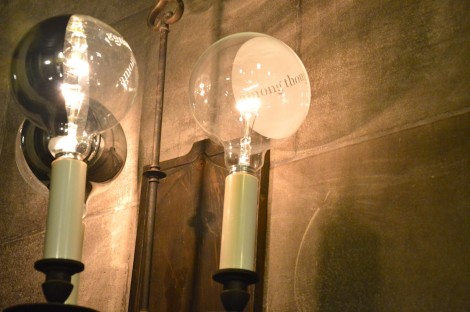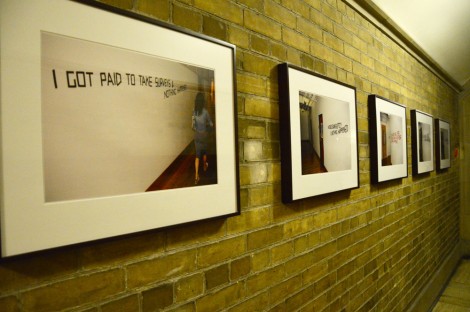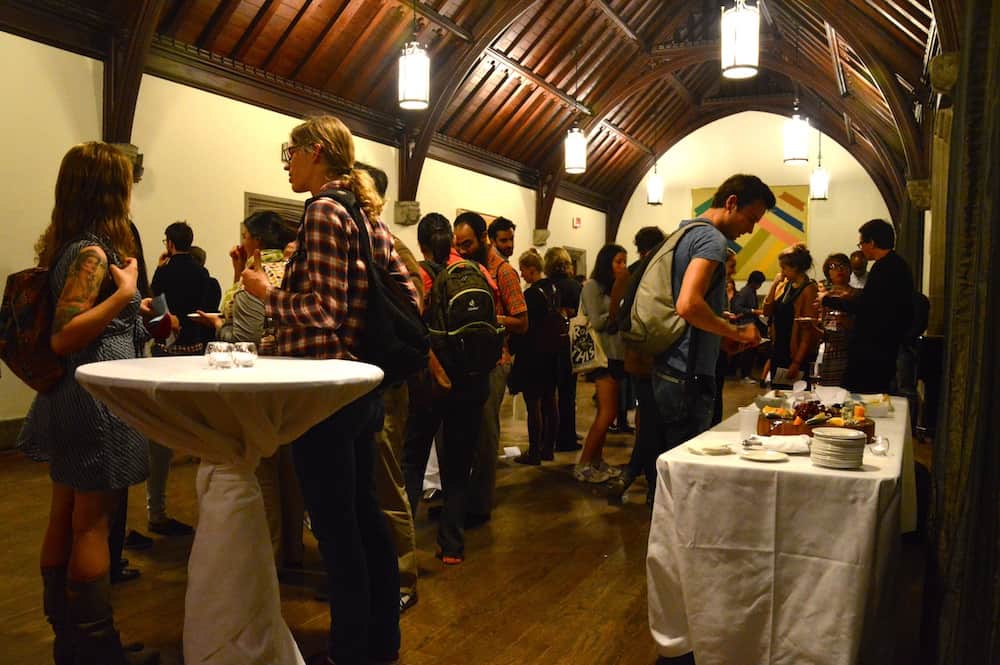Last Thursday, Hart House held an event in the Music Room celebrating the latest additions to the Hart House Art Collection. This year’s collection includes a greater variety of art than those of previous years; the integration of more Aboriginal art was something the curatorial team had been striving towards. The night was also dedicated to celebrating the launch of artist and architect Céline Condorelli’s commissioned installation, “The Company We Keep.”
I arrived to see a room of people enjoying drinks and conversation, awaiting an introduction to the night. With a backdrop of glowing red light, Hart House warden Bruce Kidd made opening comments about the history of the building. Curator-in-Residence Wanda Nanibush spoke about the collective effort to incorporate a wider spectrum of art to accurately realize Canadian identities within Hart House. She explained that each space is uniquely curated with thoughts and themes, marrying artists with activists.
As everyone split to explore the works, the rich juxtaposition of old and new was hard to ignore. Seeing contemporary art hanging within Hart House’s historic architecture offered a visual narrative of Canada’s cultural history. The pieces in the collection demonstrate how that history can be expressed in various forms, then understood collectively.

Céline Condorelli’s new installation at Hart House, “The Company We Keep.”
“The Company We Keep” is composed of 20 light bulbs scattered throughout the building, all holding fragments of a phrase exploring the support structure of friendships — specifically female friendships. Condorelli says that the installation “has to do with practicalities, things as simple as having a friend to lean on, all the things we normally don’t think about that help your everyday life.” The project refers to the historical absence of women from Hart House. When thinking of the shadows that the words create, we’re also thinking about women “in the shadows” of Hart House. Condorelli continued to explain her interest in creating something that could be integrated into the daily life of Hart House, taking elements of the architecture and intervening without imposing.
I walked back into the Music Room, and noticed the lights had been dimmed to near extinction. Toronto-based music collective LAL’s live performance caressed the room. Rosina Kazi sang barefoot and beautifully, Nicholas Murray was huddled over his turntable.

Goosebumps covered more of my skin than all my layers of clothes, and I was brought back to the theme of new merging old. As Kazi sang about topics of social justice and politics — mentioning “Idle No More” — I considered how the contemporary is motivated by the historical. As the Art Committee has expanded its focus to include various types of art and various Canadian identities, LAL closed the night addressing our own history, exemplifying how art can help influence and improve today.


